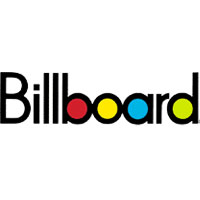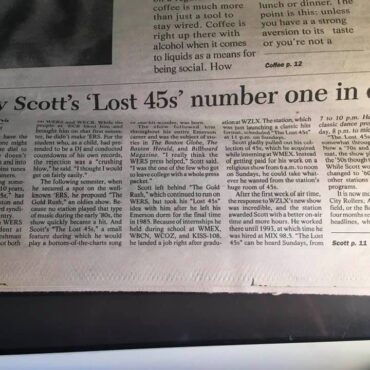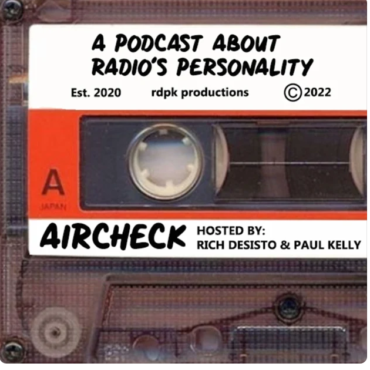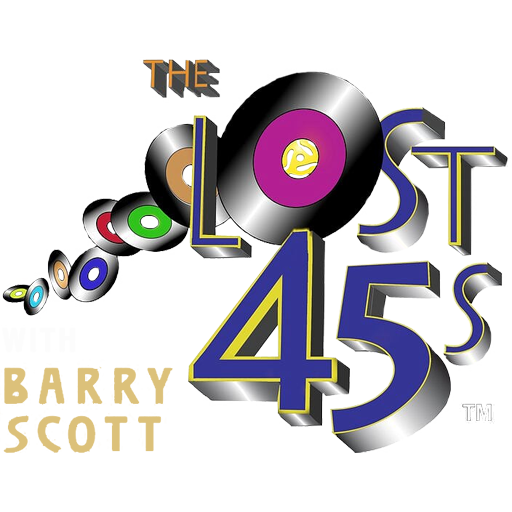 by Gary Trust |
by Gary Trust |
An era of tight playlists leaves little room for thousands of hit songs not regularly programmed on classic hits or oldies radio stations.
Still, Barry Scott has fashioned an enviably fortuitous career as host of “The Lost 45s,” airing “records you never thought you’d hear again,” many top 40 Billboard Hot 100 hits from the mid-’60s through the ’80s that have failed to live on in most stations’ regular rotations.
Since the weekly show launched on commercial radio March 9, 1986 (after 4 years at Emerson College), “America’s largest music and interview library” has registered ratings success in Boston and, from 1993 to 1999, in national syndication. (It can also be streamed at lost45.com).
“The Lost 45s” aired in Boston on classic rock WZLX until 1992, when it moved to WBOS (1992-93). Now-CBS Radio senior VP/programming Greg Strassell brought Scott to adult pop WBMX (1993-97), former ’70s outlet WEGQ (1997-99) and, WODS (2000-2013), WROR (2013-2014) and now self-syndicated on over 60 stations.
Despite radio’s oft-shifting tastes, Scott has continually reinforced that keen audiences appreciate inventive programming, helmed by a careful curator of pop’s past.
In an exclusive interview with Scott upon the show’s 40th anniversary, Chart Beat celebrates what makes the “The Lost 45s” such a great find for listeners.
What were some of the earliest songs and artists that drew you to music?
At age five, I bought my first single for 69 cents at Two Guys Department Store in Newington, Conn.: Richard Harris’ “MacArthur Park.” Next was the Archies’ “Sugar, Sugar.” Simon and Garfunkel’s “Bridge Over Troubled Water” soon followed.
I listened to both sides of 45s, as it seemed the best method to get my allowance money’s worth. (“Keep the Customer Satisfied” by Simon and Garfunkel, thus, became one of my favorites).
My two older sisters later fed me an early ’70s diet of the Partridge Family, Bobby Sherman and Helen Reddy. My younger sister used to lip synch (years before karaoke) numerous hits, so I got to hear “Half-Breed,” “The Night the Lights Went Out in Georgia” and “Alone Again (Naturally)” in a very intimate setting.
Once I discovered the “greatest hits” album, my money went to compilations from Jim Croce, Elton John, Three Dog Night, Stevie Wonder, the Carpenters and Cat Stevens.
When did you become aware of your love for radio? Were you one of those young amateurs performing shows in your bedroom?
Growing up in the Hartford, Conn., area, I was exposed to legendary local AM stations like WPOP and WDRC; WABC and WNBC/New York; WRKO/Boston; WHYN/Springfield, Mass.; and, even high-powered CKLW/Windsor, Ontario.
I was truly a “chart geek” who followed weekly surveys, wrote them down and remembered the hits, as well as overlooked gems. One of my favorite memories is hearing the WABC yearly top 100, which was not counted down in order, so you had to keep listening to fill in every chart position … which I did.
I never wanted to be anything but a DJ, as witnessed by a cassette tape, which still exists (unfortunately), of my earliest radio show at age five. Taped secretly behind my bedroom door by my hysterical parents, I can be heard playing Herb Alpert and Tijuana Brass, giving the weather, time checks and even playing one song at the wrong speed and apologizing to my “listeners.”
Let’s just say I went through every level of schooling, right up to Emerson College in Boston, knowing that this was what I wanted to do.
Please recount the origins of the “The Lost 45s,” how it came to be and why you decided to spotlight deeper hits.
While studying radio/communications and marketing at Emerson, the show began at America’s first FM college radio station, WERS. In order to be on-air there, you had to propose something “different” in order to fulfill the mission statement for public service. By 1981, virtually all ’70s top 40 music had disappeared from the airwaves, so that was the decade that prompted the program.
By my senior year, the first annual “Lost 45s Top 100 Countdown” aired – with the DeFranco Family’s “Heartbeat – It’s a Lovebeat” at No. 1. It received both local and national press and I became a rare college graduate with a hit show and even press in Billboard, Radio & Records and both the Boston Globe and Herald.
I was hired by WZLX/Boston, a few months before the station’s actual start-up, as marketing director. After some begging, “The Lost 45s” aired for the first time March 9, 1986. The show has aired Sundays in Boston since.
Most listeners’ musical styles are wider and more varied than any program director gives them credit for having. While the show features mainly huge, top 10 hits, some “stiffs” that made the lower regions of the Hot 100 are incredibly good records and, over the years, many of them have become listener favorites. I always joke that PDs at the time were not paid off or given enough illegal substances to make them top 10 hits. We spotlight them as “Shuddabeens” and listeners embrace the feature.
Listeners don’t always want the same old, same old. They will find other places to go, be it their iPods, satellite or internet stations that play more than, say, 200 songs over and over.
The loyalty of the audience for this show is unlike anything I have ever witnessed in radio.
Why do you think most radio formats generally stick to a consensus collection of well-known hits, avoiding thousands of other hit songs from past decades? Obviously, research shows that audiences prefer hit songs, but why is a show like “The Lost 45s” such a rarity?
This show is the antithesis of research. Radio is not rocket science. It’s supposed to be fun. It’s supposed to be exciting. Amid the so many repetitious songs, why not have a huge ‘oh wow’ category?
At the very least, the show offers stations that say they play the greatest hits of the ’60s, ’70s and ’80s the chance to actually play all the hits … which includes “Billy, Don’t Be a Hero,” “Torn Between Two Lovers,” “Physical” and “Mickey.” These are songs that listeners grew up with and pretending they don’t exist is an insult to their intelligence.
Listeners can tell when stations are being untruthful. Hearing PD after PD tell me to “stick to the hits” while Van Morrison’s “Moondance” – a No. 92 Hot 100 hit in 1977 – is in regular rotation makes me squirm.
I’m thankful for the very few programmers who have “gotten” this show over the years, most notably CBS’ Greg Strassell and Brian Thomas, but they are few and far between.
A big part of “The Lost 45s” library is fun, sugary bubblegum pop. Is that your preference, radio’s dismissal of such a sound or both?
I’d say a bit of both. This show celebrates pure power-pop, from Tony Orlando and Dawn to Culture Club. Inevitably, the child in every adult listener gets a kick out of hearing the songs they bought back then and that tends to lean toward bubblegum.
On “The Lost 45s,” teen idols share the air with R&B superstars like Aretha Franklin; adult contemporary acts like Barry Manilow and the Carpenters; and, country crossover artists such as John Denver and Ronnie Milsap. That’s simply the way AM top 40 radio was.
Look at any Hot 100 from a given week in the ’60s, ’70s or ’80s and add up the number of songs in the top 40 that now receive airplay. The number is tiny. That’s sad.
I once told Elton John about the show and, as an avid record collector, his eyes lit up. He asked if I played any of his “stiffs” and I happily replied “yes.” We discussed the merits of “Ego,” “Nobody Wins” and “I Feel Like a Bullet (in the Gun of Robert Ford).”
So many genres have a place on the show. I think if I wasn’t hosting, writing and creating it each week, I’d be a listener, as well.
What are some of your favorite “lost 45s”?
All of them!
More specifically, anything by the Osmond Brothers. Their “Down By the Lazy River,” “Crazy Horses” and “Hold Her Tight” rock just like Zeppelin.
I love pure pop and soulful R&B; Joe Simon’s “Drowning in the Sea of Love”; Eric Carmen’s “Sunrise”; Falco, Tracey Ullman, M’s “Pop Muzik”; ABBA; Captain and Tennille; Kraftwerk; and, seldom-played disco hits.
“The Lost 45s” features so many artist interviews. What are some of the most surprising facts you’ve learned from those chats?
Sir Monti Rock III (“Disco Tex”) recently became my 752nd exclusive artist interview, many of them on the rare side.
I learned early on that it isn’t enough just to play the songs. Having artists talk about the recording process, why they were or were not hits, what the songs actually meant – and why they feel that they are not programmed much today – sets this show apart.
I spent a rare hour with Aretha Franklin, finding out that “Day Dreaming” is about Dennis Edwards of the Temptations.
Carly Simon chatted sweetly about her love affair with Cat Stevens, describing a song she wrote for him in exact detail.
I’ve shared candid moments with people who have since passed. Sonny Bono told me he wished that he and Cher had acted more as a business than as a husband and wife; and, Eddie Rabbitt boasted of hopefully beating the cancer that eventually caused his passing just a few months later.
Brian Wilson told me how he used to sleep with an AM transistor radio under his pillow in an interview that even his management described as spectacular for its lucidity.
Debby Boone called me a geek for knowing the chart position (No. 80!) of Kacey Cisyk’s original version of “You Light Up My Life.”
And, Smokey Robinson praised my interview technique as being different than any he has encountered throughout his career.
These conversations, recorded over a span of 25 years, are sprinkled within every segment of the show, creating a feel like no other retro radio program.
I prepare with so much research and am such a fan of their work that artists seem to open up to my questioning.
Are you a fan of current acts, i.e., some future lost 45s (or mp3s …)?
Sure : Pink, Bruno Mars, Eminem, Lady Gaga, Maroon 5, Adele, Taylor Swift…
I now lean country. I never heard it growing up, aside from the rare pop crossover, but that seems to be where most of the real melodic music with meaningful lyrics is now.
Lady Antebellum, Kenny Chesney, Keith Urban, Tim McGraw…country is a bit like the new pop music.What does the future hold for “The Lost 45s”?
Keeping it an on-air destination and adding past shows, dating to my college years, as well as new special programming, to the website. There’s the next annual “Lost 45s” listener cruise in July and I’m even working on a TV series based on these great songs and artists.
I’m also always trying to secure interviews with elusive top “Lost 45s” artists, including Stevie Wonder, Paul McCartney, Rod Stewart, Elton John, Neil Diamond, ABBA, Lionel Richie.
I have released two CDs based on the show and hope to offer more. I may also release a second book since the first, “We Had Joy, We Had Fun,” did well.
Ultimately, I’ll continue “The Lost 45s” as long as it brings listeners joy, in any medium that will have me. If it ends up being web-based, then it will be terrestrial radio’s loss.
There seems to be a lack of interest in musical benchmarks and specialty shows, which brings the value of any radio station down to iPod level.
That is a trend that needs reversing if radio as a medium wants to retain a loyal, interested audience.
There has to be a place on the radio dial, in every market, for these songs and artists to be kept alive.








Post comments (0)